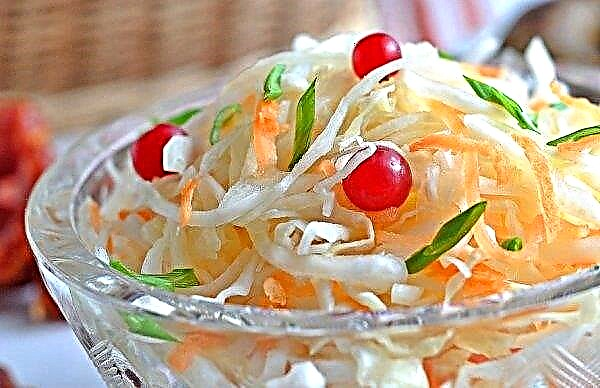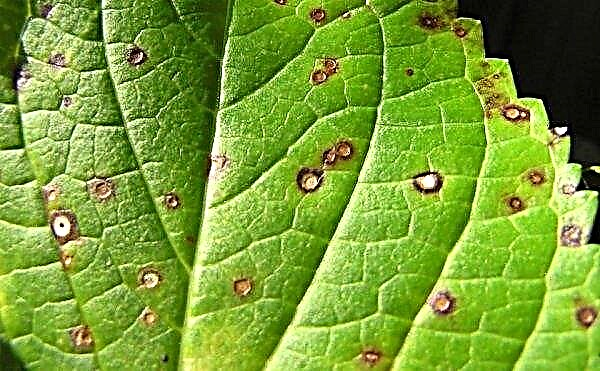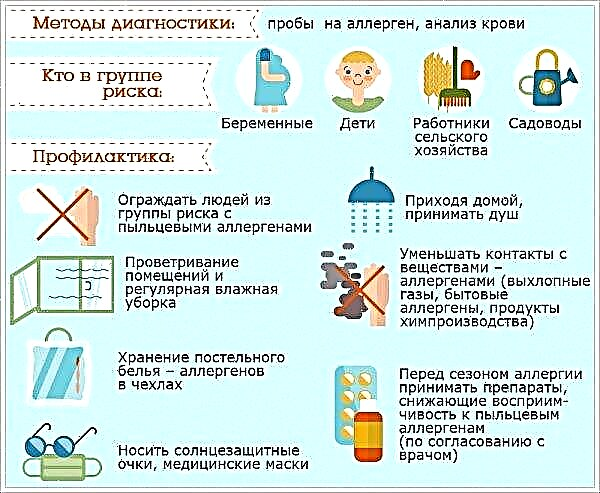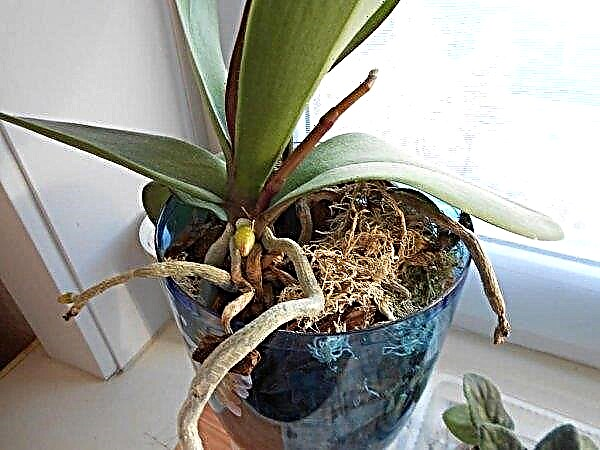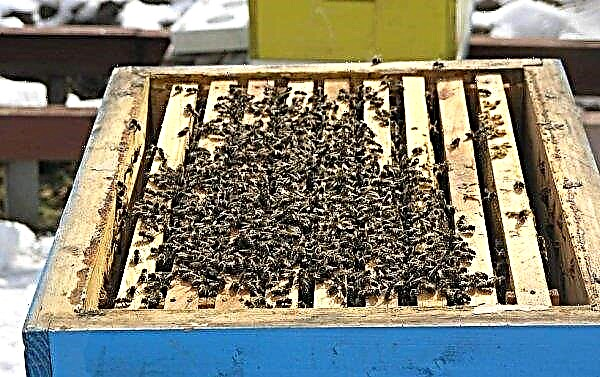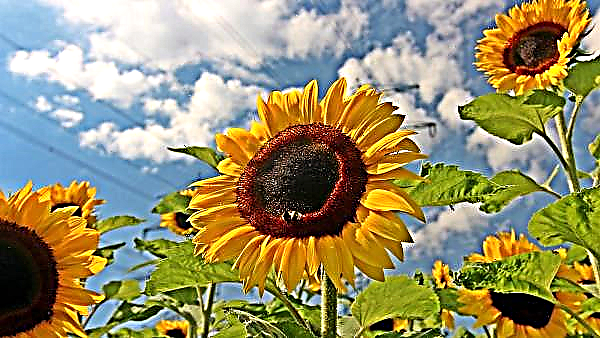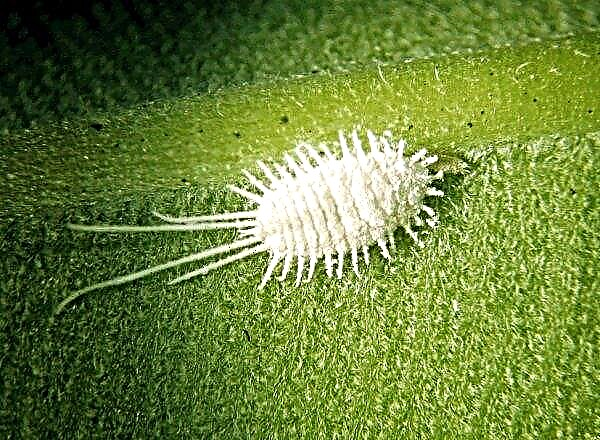Siberian cedar, or rather, cedar pine fits well into any landscape and can grow everywhere in Russia, creating a backdrop for other garden crops. Its growing from seeds takes a lot of time. But it is not as difficult as it seems and can be a good way to diversify the population of trees in your yard. Read more about how to properly grow cedar from seeds at home, read further in the material.
How to collect and prepare seeds
Cedar seeds are in cones. Their feature is that for complete ripening they need at least 18 months. It means that for collecting cones that are at least 1.5 years old. Fully ripened cedar cones fall from the tree on their own. They can be collected in September, when the collection of nuts.
Important! Do not take the bumps that have fallen and spent the winter on the ground. Germination of seeds from them will be less than 50%.
To extract the seeds, try squeezing the bump with your hands and turn. Applied mechanical pressure crushes the flakes and the nuts fall out. If this does not happen - scald the cone with boiling water. This will help the flakes open and “release” the seeds. Do not use roasted nuts or those with damaged shells for sowing.

How to sprout pine nuts at home
If you immediately plant seeds at home, then they will be able to germinate no earlier than a year later. And at the same time you will need to monitor the condition of the soil in the landing container and air temperature. This is a lengthy process. Therefore, nuts are pre-processed.
Seed Selection and Processing
In nature, a seed needs some time to germinate. During this period it “wakes up”, the outer shell begins to delaminate and a sprout appears. This process is called stratification. To successfully germinate pine nuts, you need to reproduce the natural environment by simulating them. Some seeds require heat treatment, others require cold, and others require a combination of the first and second.

For sowing take large nuts from a healthy, ripe cone. Check the shell for damage. They should not have mold, traces of defeat by diseases or insects. There should not be any unpleasant odors.
Important! Nuts from real cedars are unsuitable for food to humans or animals. They contain too much resin and have a bitter taste, unlike the usual seeds of cedar pine.
Cedar Seed Stratification
The process of stratification of pine nuts will consist of warm and hot processing. It is also desirable to treat them with a fungicide against fungal diseases.
You will need to do the following:
- Heat the water to a temperature of + 60 ° C and soak the seeds extracted from the cone in it. The process will last three days. And every 24 hours, the infusion is drained and replaced with a new portion of heated water.
- At the end of the process, you need to prepare a pale pink solution of potassium permanganate and immerse the seeds in it for 12 hours. Then remove and dry a little in normal room conditions.
- Prepare the mixture in which the nuts will be stored. It will consist of sand, peat, sawdust taken in a ratio of 1: 3: 1.
- In the plastic container, make holes for air exchange. Put the prepared mixture in it.
- Submerge the seeds in it.
- Refrigerate for 3 months. The temperature regime should remain stable: not higher than + 4 ° C and not lower than -4 ° C. Lowering or raising the temperature should not last longer than several days.
- During these months, the contents of the container are checked monthly. It is necessary that the mixture is moderately moist, but not so that condensation and mold forms.
- If any seeds are covered with mold, then they are thrown away, and the mixture is completely replaced with a new one.
Planting a seed in a pot
A container, coarse sand, a sterile mixture for conifers, gravel, and stratified seeds are prepared for planting.
Did you know? Pine is considered a symbol of wisdom and longevity.
The technique of planting seeds step by step is as follows:
- They plant in April or May, when the natural growth of conifers begins. Pebbles are laid at the bottom of the container.
- Then mix the landing mixture with sand and pour over the drainage.
- Moisturize.
- Lay the seeds on the surface.
- Sprinkle them with a shallow (up to 1.5 cm) layer of coarse sand.
- Place containers for germination in a room where the temperature will be around + 21 ° C. Until germination, the light intensity does not matter.
- Over the entire growth period, the soil should remain moderately moist.
 After the seeds have sprouted, the containers are installed so that the plants are evenly lit, and not stretched to one side. In a year they will grow by 7–15 cm. They can be planted in a permanent place in the ground only after they reach a height of about 30 cm
After the seeds have sprouted, the containers are installed so that the plants are evenly lit, and not stretched to one side. In a year they will grow by 7–15 cm. They can be planted in a permanent place in the ground only after they reach a height of about 30 cm
How cedar grows
Carefully choose a sunny area. And do not plant trees closer than 1.5 meters apart. For planting, prepare a hole that will be 2-3 times the size of the root ball.
The planting technique will remain the same as in the pot:
- A drainage layer is laid at the bottom of the pit.
- The seized earth is mixed with compost. Then part of the mixture is poured into the drainage.
- A seedling is placed on top.
- Fill up the soil. Add needles or sawdust.
- Check that the root neck is at the same level as it grew in the nursery.
- Pour 1-2 buckets of water.
- If the ground sags, then they add more.
- Establish a support and tie a sapling to it. You can install 2 sticks on the sides and wrap the string around them so that the seedling is between them. This is necessary so that a strong wind does not damage the plant.
- The root zone is sprinkled with a layer of mulch with a thickness of at least 10 cm. It should protect the soil from drying out and prevent the growth of weeds.
Care
Caring for coniferous seedlings is very simple. It is enough to regularly water them, remove weeds, fertilize, for the winter to shelter from frost and snow, and in the spring to prevent diseases and pests. Later, sanitary pruning will be added to the list, during which dry, diseased or interfering branches are removed.
Did you know? 1 kg of pine nuts contains about 4 thousand seeds.
For seedlings
Until a plant is planted in open ground, it can face a number of problems. And the actions of the gardener should be aimed at preventing them.
Among the main ones:
- Lighting. In any room, daylight (the most intense) comes from the windows. Because of this, plants begin to stretch toward them. Therefore, over the seedlings set backlight to keep their trunks even.
- Plants react negatively to temperature changes and may die. Therefore, the room must be maintained at the same temperature throughout the entire development period.
- Seedlings "from the premises" can be sick during acclimatization, after landing on a permanent place. Therefore, they are provided with oxygen access, and in the warmer months they begin to regularly take them outside for hardening.
- As for the soil, phytopathogens may appear in it. They are carried by air, water and insects. Therefore, once every 2 weeks, the soil is irrigated with fungicides. This may be a pale pink solution of potassium permanganate, a solution of Bordeaux liquid (5%) and other means.
- In the first year of growth, seedlings need to be fed 2 times over the summer. Buy for this fertilizer for conifers. The plant needs nitrogen, phosphorus and potassium. But unlike hardwood, there should be less nitrogen in them than two other substances, since its conifers are obtained from the air. It is desirable that the mixture contains magnesium. Here are some of the most popular fertilizers: Zircon, Green Needle, Magnesium Sulphate, Aquarin, MicroMix, Florovit, Bona Forte.
- The wintering period of seedlings is also important.. On the street they will freeze, and in the room it will be hot. So you can put them on a glazed, but unheated balcony, and ensure the air temperature is not higher than + 10 ° С.

For the seedling
After planting in the ground, the seedling needs regular watering - 2-3 times a week for 1-2 buckets of water. Spend it throughout the growing season. And before the frosts, in October, the last time the plants are abundantly irrigated with water. It is necessary that they stock up with moisture, otherwise in winter the needles will dry out and fall off.
Important! It is impossible to compact the soil around a pine trunk. Its roots are poorly developed in such soil and the tree may fall under the influence of a strong wind.
For a tree to grow rapidly, it needs nutrients. During the vegetative period, 3 top dressings are carried out: spring and two summer. You can use the same fertilizers for conifers with which you fed seedlings.

As soon as the soil is irrigated with water, weed growth is activated. They become competitors of the young cedar in the struggle for moisture and nutrients. Therefore, they must be shed on the second day after watering. But do not deepen the hoe deeper than 5 cm so as not to damage the roots.

If you lay a layer of mulch in the basal zone, then it will protect the soil from drying out in the heat, and also will not allow weeds to germinate. Layer thickness - up to 6 cm. For this, sawdust, needles, straw, bark or other organic materials are used.

In winter, a weak seedling can be broken by a strong wind or a mass of snow. To prevent this, knock down a triangular frame of several boards and tighten it with burlap or agrofibre. But in the upper part of this design, a rather large hole for sunlight is necessarily left. They are needed for photosynthesis, which does not stop in conifers throughout the year. The design is installed over the seedling in front of snowfalls, and in the spring is removed.
Behind the adult tree
Mature trees do not need careful maintenance. They have enough irrigation coming with rainwater. But if there is a drought, then you can organize watering, like other plants in your garden.

As for fertilizers, they enter the soil from the falling needles. During development, it accumulates nutrients. Needles are replaced every 3 years. The one that has fallen, under the influence of rains, snow and microorganisms, gives up the accumulated substances to the soil. From there, the tree consumes them again. Some gardeners additionally feed their conifers with specialized fertilizers once a year - in April.
Did you know? According to legend, Noah's ark was made of cedar wood.
Pruning branches as needed. If you find a branch dried or infected with fungi, carefully remove it. But before work, wipe the cutting edges of the secateurs with alcohol. A general inspection of the tree and removal of branches broken by wind or snow is carried out at the end of February. Also remove those branches that rub against each other or are located at such an angle that they can break.
Video: How to prune conifers
Growing conifers is a fairly simple type of gardening. They are unpretentious to growing conditions and do not need constant care. But in winter they will give your garden a well-groomed look. Therefore, if desired, cedar or cedar pine can be grown at home, like any other tree.


